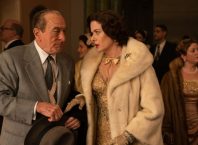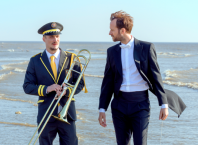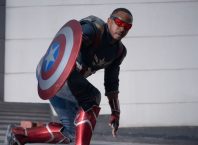By Shlomo Porath
When Ron Howard’s film of ‘The Da Vinci Code’ came out in the summer of 2006, it was met by wide-spread disapproval. Indeed, the most charitable reviews seemed to enjoy it for being so-bad-its-good. I was in that very mildly positive group- I thought the film was no more ridiculous than the novel. It even had some saving graces I genuinely enjoyed, chiefly Ian McKellen’s wonderfully campy performance and Hans Zimmer’s deadly serious score (I myself am puzzled as to why my two favorite elements were so tonally opposed).
With that in mind, I was expecting another amiably ridiculous film in ‘Angels and Demons’. Not having read the novel, I do not quite know who is responsible for the marked change in quality between the two film adaptations. Going in cold, I really enjoyed this film, and was totally engaged by its mystery.
A popular and progressive pope has died. The Vatican is preparing for the Conclave in which the new pope will be elected. Meanwhile, in Geneva (the plot has a whole bunch of “Meanwhile, elsewhere” transitions), after a successful attempt to create Anti-matter at the Supercollider project, a conspicuously suspicious man manages to kill a leading scientist on the project and steal said Anti-matter. Shortly thereafter Robert Langdon, Harvard Symbologist, is informed that four leading Cardinals have been kidnapped and are being held somewhere within Vatican City. Their abductor, the same guy who stole the Anti-matter, has notified the Vatican that later that day, he will begin killing the Cardinals, one every hour. He also sent a symbol of an organization called the Illuminati, which is why our heroic symbologist was called. (Incidentally, Harvard doesn’t have a symbology department, but why split hairs).
According to the film, the Illuminati were a group of people dedicated to bridging the gap between The Church and science. The church took this as heresy and purged the group in the 17th century. Deciphering the importance of the symbol, Langdon quickly deduces that the kidnapper plans to use the Anti-matter to destroy Vatican City as revenge on The Church. Langdon teams up with Vittoria Vetra, an Italian Particle Physicist who worked on the Supercollider, and they go on a race against the clock to save the Cardinals and Vatican City.
Tom Hanks returns as Langdon, though thankfully he’s gotten rid of the unbecoming hair-cut and stiff line-readings the plagued the first film. He’s sprightlier in this film, and if he’s still phoning the performance in, I had less of a desire to hang-up this time.
Ayelet Zurer, one of Israel’s most attractive exports, does a fine job of playing a distant second fiddle to Hanks. She doesn’t have much to do, but what she does is just fine.
Ewan McGregor, Armin Mueller-Stahl and Stellan Skarsgård comprise the rest of the name cast. McGregor, who as the late pope’s assistant has his first somewhat juicy role in a while, is quite game. Mueller-Stahl and Skarsgård, two very good actors, are fun here, playing a senior Cardinal and the head of the Swiss Guard, respectively, even though one gets the sense that they were cast more for their weighty and authoritative presence than for their skill. But the film is wise enough to have fun with these actor’s personas. The film takes pleasure in setting up countless suspicious glances and shifty lines of dialogue, all of this to keep you focused on the mystery, while simultaneously averting your gaze from the bigger picture.
Obviously, this comes from the book; however Howard makes good use of the audience’s preconceptions. He uses basic cinematic clichés to keep you from piecing the puzzle together until the end. I figured out who the culprit was early on, but I was constantly second-guessing my hunch, because not until the end did the motives make sense. Trying to put together villain’s identity was a trap the story set, and made for an uncommonly satisfying cinematic mystery, one which I was happy to fall for.
Even if the mystery hadn’t really worked, I suspect I still would have enjoyed the film. If nothing else, than for it’s setting. It feels like it has what Werner Herzog calls ‘The Voodoo of Location’- the benefit of a real location’s aura. This film has that feel, which is rather remarkable, as the filmmakers were not allowed to shoot in the Vatican. A terrific combination of production design and visual effects managed to pull it off almost seamlessly (there are some rather awkward CG shots).
There you have it. I’m as surprised as you are, but I really enjoyed this film. I had a big goofy grin on my face at the end, wondering how I fell for it. The combination of modest expectations and not being familiar with the source material can work wonders, apparently even with something as trashy as this. Pure hokum, but for what it is, it can be quite an entertaining time at the movies.
Image credit: http://www.flickr.com/photos/mycine/2984161987/





